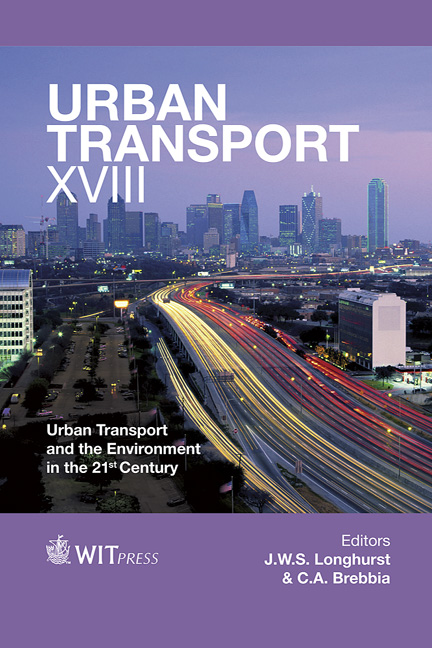Modelling Of Tree-induced Effects On Pedestrian Exposure To Road Traffic Pollution
Price
Free (open access)
Transaction
Volume
128
Pages
11
Page Range
3 - 13
Published
2012
Size
451 kb
Paper DOI
10.2495/UT120011
Copyright
WIT Press
Author(s)
C. Borrego, J. Valente, J. H. Amorim, V. Rodrigues, P. Cascão & A. I. Miranda
Abstract
According to the United Nations Environment Programme (UNEP) information in 2009, at least 1 billion people are exposed to outdoor air pollution that exceeds the air quality standards of the World Health Organization (WHO). Poor air quality in urban areas, mainly associated with the transportation sector, has been directly linked to almost 0.8 million premature deaths annually, especially in sensitive groups such as children. In this context, the role of trees on improving urban air quality has been discussed. However, there is still a scarce understanding on the ultimate impact of trees over the exposure of pedestrians. This paper evaluates the exposure of students in their daily walk to/from school, and how it relates with the effect of trees over the local concentrations of road traffic-emitted air pollutants. The study is focused on an area of 0.380.22 km2 centred at a high school of the city of Aveiro, in central Portugal, which is located close to a road with significant traffic. A period of one day was chosen, based on data availability. Time evolution of georeferenced location of an individual was tracked with a GPS for different alternative walking routes to the school. Air quality and meteorological data were measured in the school yard. Simulations of carbon monoxide (CO) concentrations in the study domain were performed with the Computational Fluid Dynamics (CFD) model VADIS, with and without considering the influence of trees over the dispersion. Traffic emissions were estimated with the TREM model, using traffic counts (with vehicles categories discretization) data. Simulated wind speed and CO concentrations were compared with measured values showing a very good agreement (normalized mean square error, NMSE, equals 0.29 and 0.04, respectively). An exposure model was developed that associates the georeferenced location of the student with the computed air quality and
Keywords
CO exposure, urban pathways, CFD modelling, urban trees





